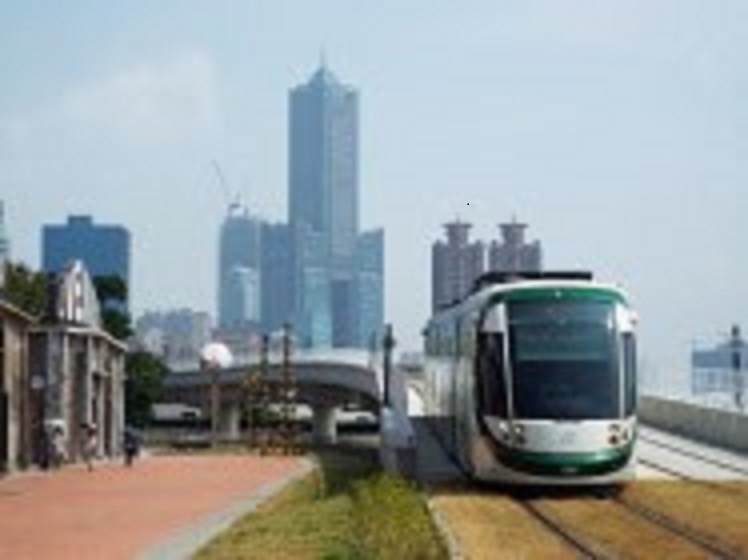“Asian Review 031” ― Taiwan part8
Kaohsiung’s LRT and the pineapple can factory
Kaohsiung is the southernmost city of Taiwan, and it is competing with Taichung for the second most populated city in Taiwan (about 2.8 million people as of July 2017).
The LRT (next generation type tram) started to operate in Kaohsiung and it has attracted attention. The LRT has already been introduced by the Nikkei (October 30, 2017). According to the article, this system had taken over the management of the Taiwan Railway Administration Bureau Taiwan Railway Administration of former freight trains. It has converted it into a tram system which had begun free trial sales in some sections from 2015. In September 2017, the first section of 8.7 kilometers in length has been officially opened.
The vehicles made in Spain are modern and the rails are surrounded by grass. Trees have also been planted on the platform. By 2019, a 22.1-kilometer loop circling the Kaohsiung city center will be constructed, and the orbit traffic network including two MRTs (subways) already in operation will be completed. In Taiwan so far, as they often use motorcycles, public transportation was not so familiar. I hope that the custom of riding public transportation will become common.
According to the article, “In the bay area which is the first phase section of this LRT, Kaohsiung City started urban redevelopment in 1999, building an international exhibition hall and commercial facilities. Within the radius of 800 meters from the LRT station, they ease the floor area ratio limit in order to induce private development.” We can just call it the Taiwan version of TOD (Transit Oriented Development). A man in the City Development Bureau says, “In Hamashin which is the terminal station in the center, we would like to proceed the development integrated together with the former freight train yard which was constructed by Japanese before the war and restore the landscape of Japanese occupation era”.
In another example of the pineapple canning factory that solely remains since the Japanese occupation era, there is a movement of preservation. According to the news provided by the Bureau of Cultural Affairs, Kaohsiung City Government, the “Jioucyutang Taifang Company Pineapple Cannery” of Kaohsiung City has undergone restoration work for about two years, and on August 18, 2018, they opened a cultural and recreation facility named “Taiwan Pineapple Cannery”.
According to the Bureau of Cultural Affairs, tourist spots such as Jioucyutang station opened in 1908, the former Dashu Old Railway Bridge and the Jhuliao hydro-pump station completed in 1913 have already formed a culture corridor, and they are expected to flourish the tourism industry. From these situations, we can recognize that the legacy of the Japanese occupation era does not give a negative image to people.
